Dell XPS (9640)
The Dell XPS 16 (9640) finally adopts Dell’s new XPS design language, backing it up with great performance and a stunning display.
Pros
- Great performance
- Sleek design
- Stunning display
- Keyboard feels good
- Solid battery life
Cons
- Minimalism not for everyone
- Port selection isn’t huge
Over the past ten years or so, the Dell XPS series of laptops has been amongst the most recommended and most popular. Over the past two years or so, however, Dell has been reimagining what the XPS series can offer, with bold new design choices that could be controversial.
Until now, those new designs simply existed as options in the so-called “XPS Plus” series. Now, however, that’s changing — for 2024, you can’t get a high-end XPS laptop without embracing Dell’s new design language. The Dell XPS 16 (9640) is the largest in the series and offers options for high-end graphics and a large battery.
So, how does the Dell XPS 16 (9640) perform in the real world, and how easy is it to get used to Dell’s new designs? I’ve been using the laptop to find out.
Dell XPS 16 (9640) design
The first thing you’ll notice when you look at this iteration of the XPS 16 is its design. This overall design language first debuted in the 2022 Dell XPS 13 Plus — and at the time, though it was considered to be very sleek or stylish, seemingly sacrificed some functionality. That remains true for the XPS 16 (9640).
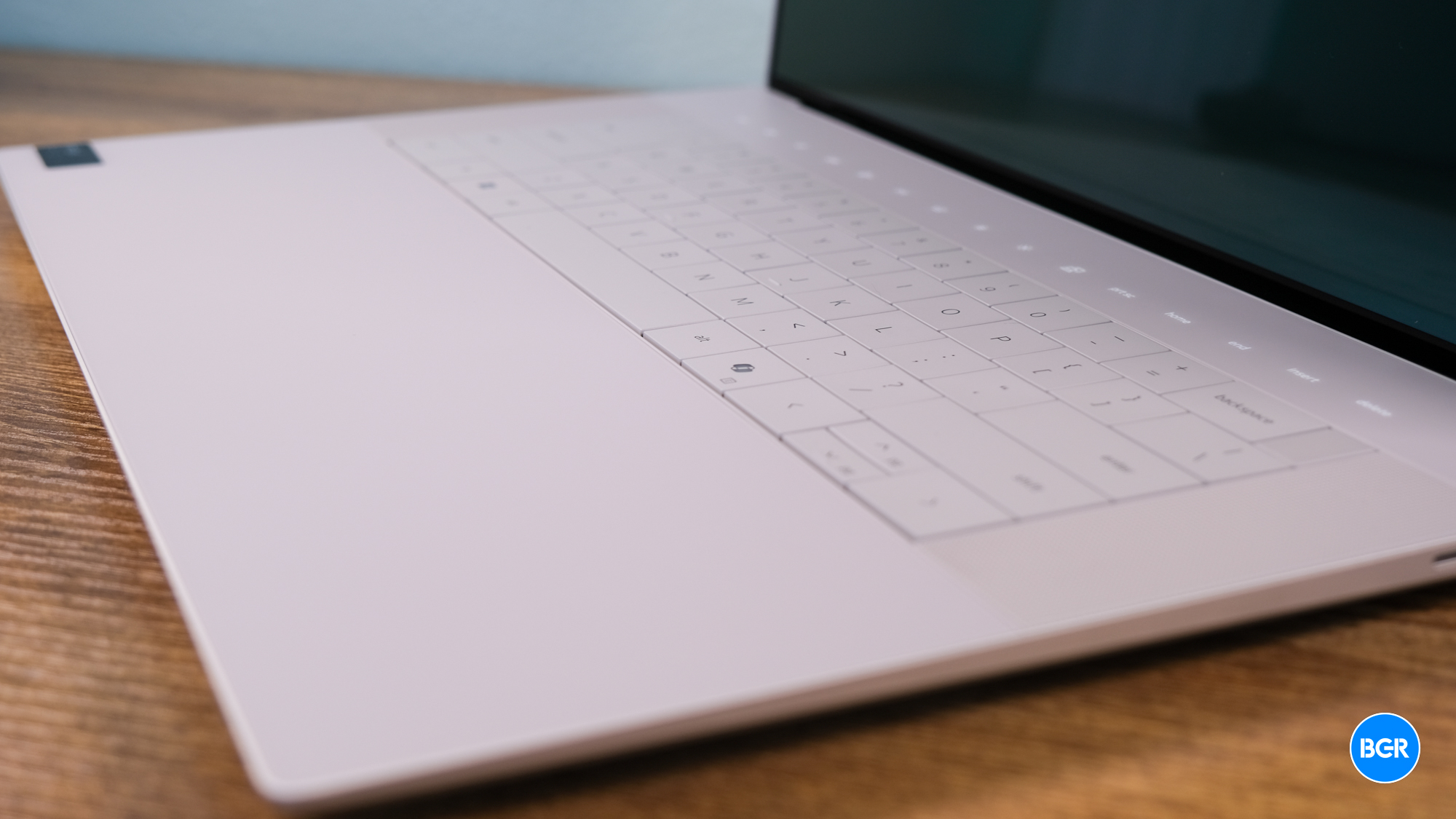
To be clear, the XPS 16 is very sleek and stylish, and much of that comes down to trying to be a little more minimalistic. The keys on the keyboard, for example, are flush with the keyboard bed, while the function rows are now capacitive touch LED lights that don’t even appear when the laptop is off or asleep. Even more unique? There’s no touchpad. Well, there is a touchpad — but it’s hidden in the palm rest.
Personally, I quite like these design changes, but they do take some getting used to. The vast majority of the time, for example, you’ll simply plop your finger down on the touchpad and it’ll work the exact way you expect it to. Sometimes, however, you’ll do so and find that your finger isn’t actually on the touchpad, and those moments can be a little annoying. You’ll have to decide for yourself if that’s a big deal, but again, you will get used to it all.
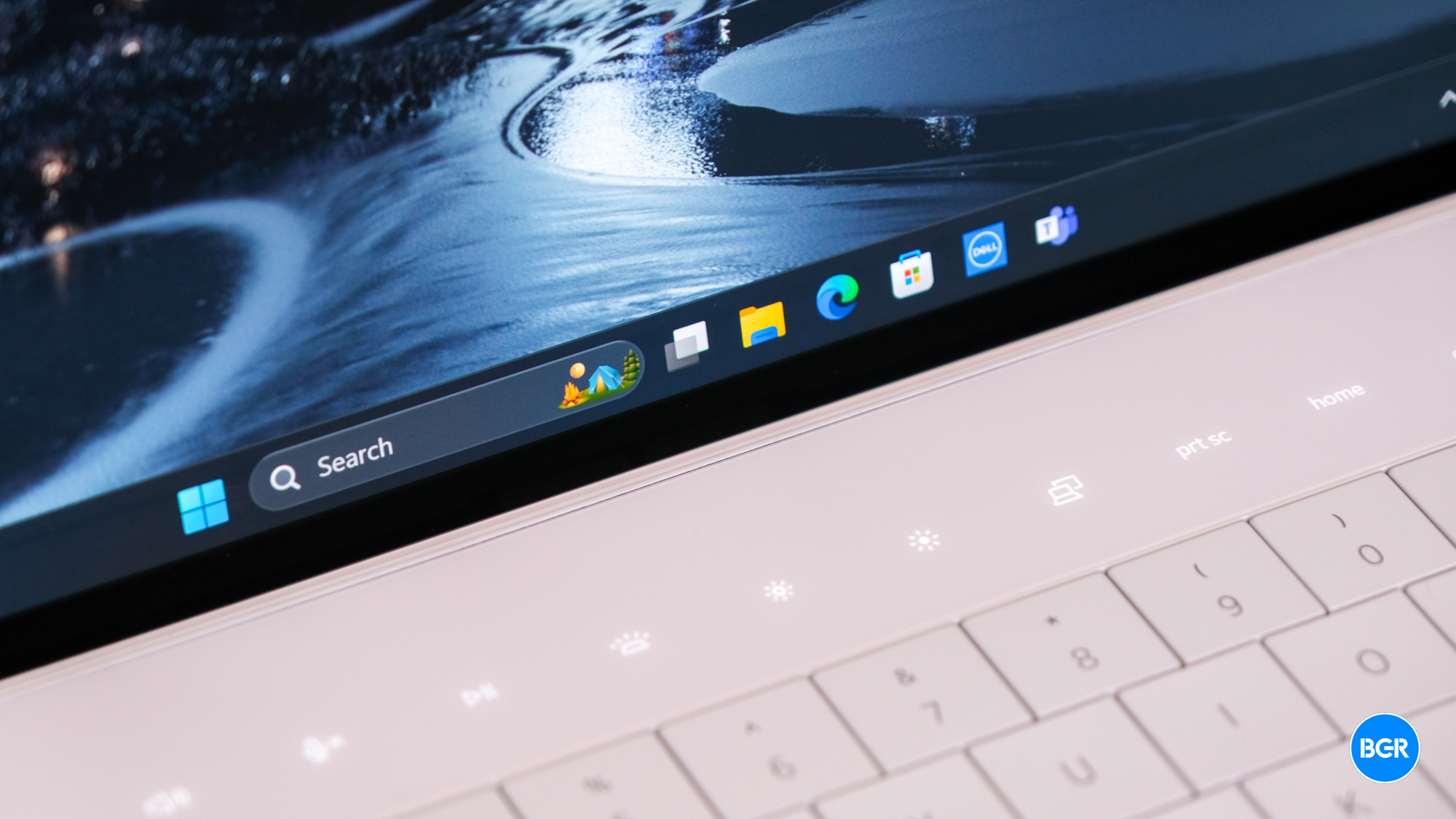
The other controversial design element is the port selection. The port selection is slightly different depending on the model you get, but our review model has two Thunderbolt 4 Gen 2 ports and one USB 3.2 Type-C port, along with a headphone jack and MicroSD card slot. The laptop does come with a USB-C to HDMI and USB-A adapter, but the fact that you have to use that adapter will frustrate some users. Again, this is something I don’t really care all that much about. We’re moving to everything connecting through a USB-C connector, and while many workflows aren’t there yet, I’d be curious how many users buying a laptop in this price range don’t mostly rely on USB-C.
The rest of the design is most uncontroversial and it looks great. The display more or less feels edge to edge, even though there’s a slightly thicker bezel at the top which rightfully houses the webcam. The build feels very premium and strong, and while the laptop is a little heavy, that’s kind of what happens when you buy a 16-inch laptop.
Dell XPS 16 (9640) keyboard and touchpad
I found the keyboard to take a little getting used to, but that has nothing to do with its quality and more to do with key spacing. The keys are nice and large, and they feel nice. They’re a little softer and not quite as clicky as I might have liked, but that’s a personal preference, and others won’t feel the same way. Overall, typing on the Dell 16 (9640) was a good experience, especially after I got used to the spacing of it.
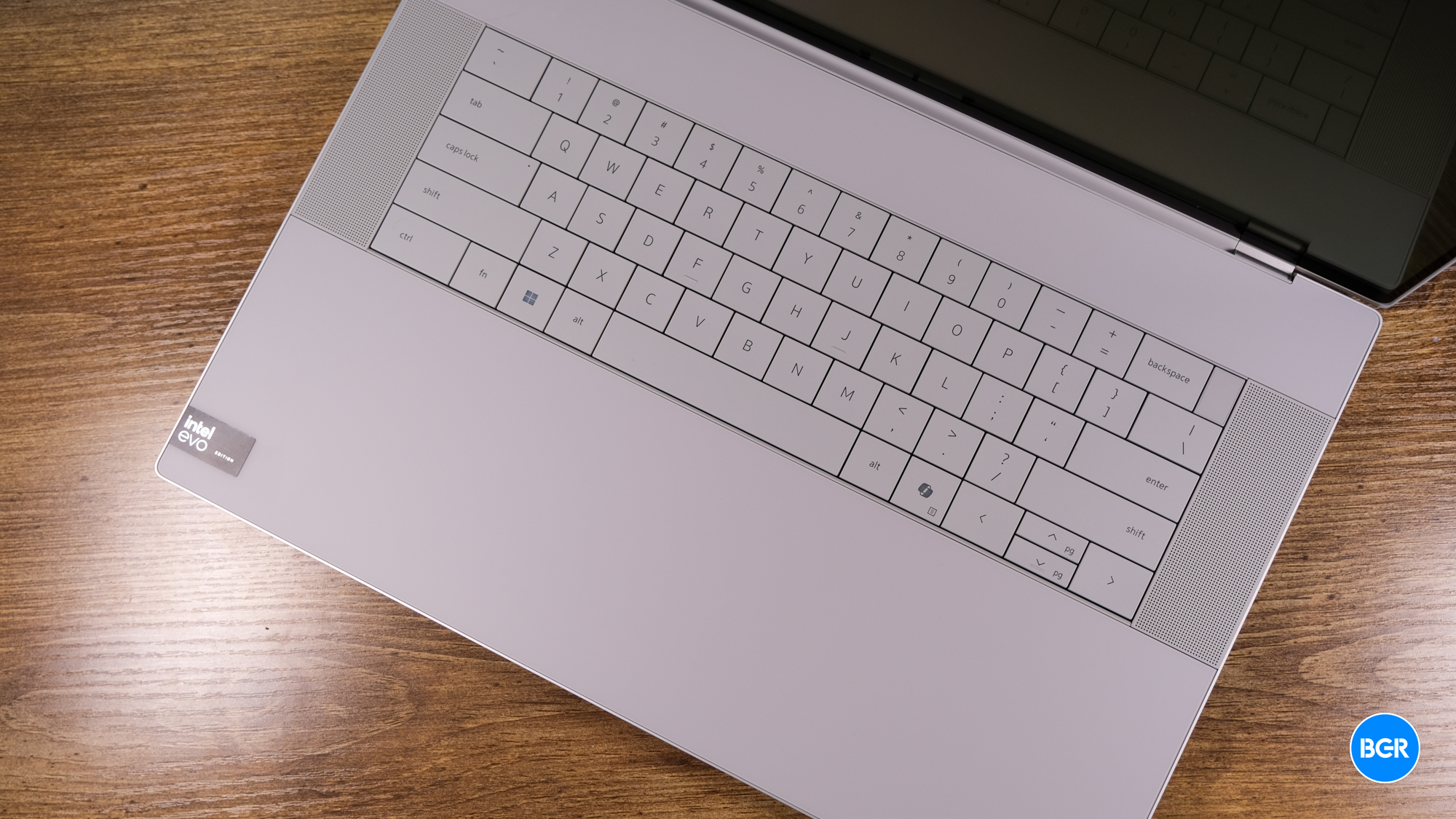
The laptop also comes with the new Copilot button next to the right-hand alt key, which pulls up a preview version of Copilot at the right of the screen. Its helpfulness will obviously depend on if and how you integrate the feature into your workflow, but it’s nice that it’s there in the first place.
Despite the lack of markings for the size of the touchpad, its quality is pretty good. It’s obviously harder to test how it performs at the edges and corners when there aren’t really defined edges and corners, but I found it mostly responsive.
Dell XPS 16 (9640) speakers
The Dell XPS 16 (9640) comes equipped with 10-watt stereo speakers, and the laptop supports standards like Dolby Atmos.
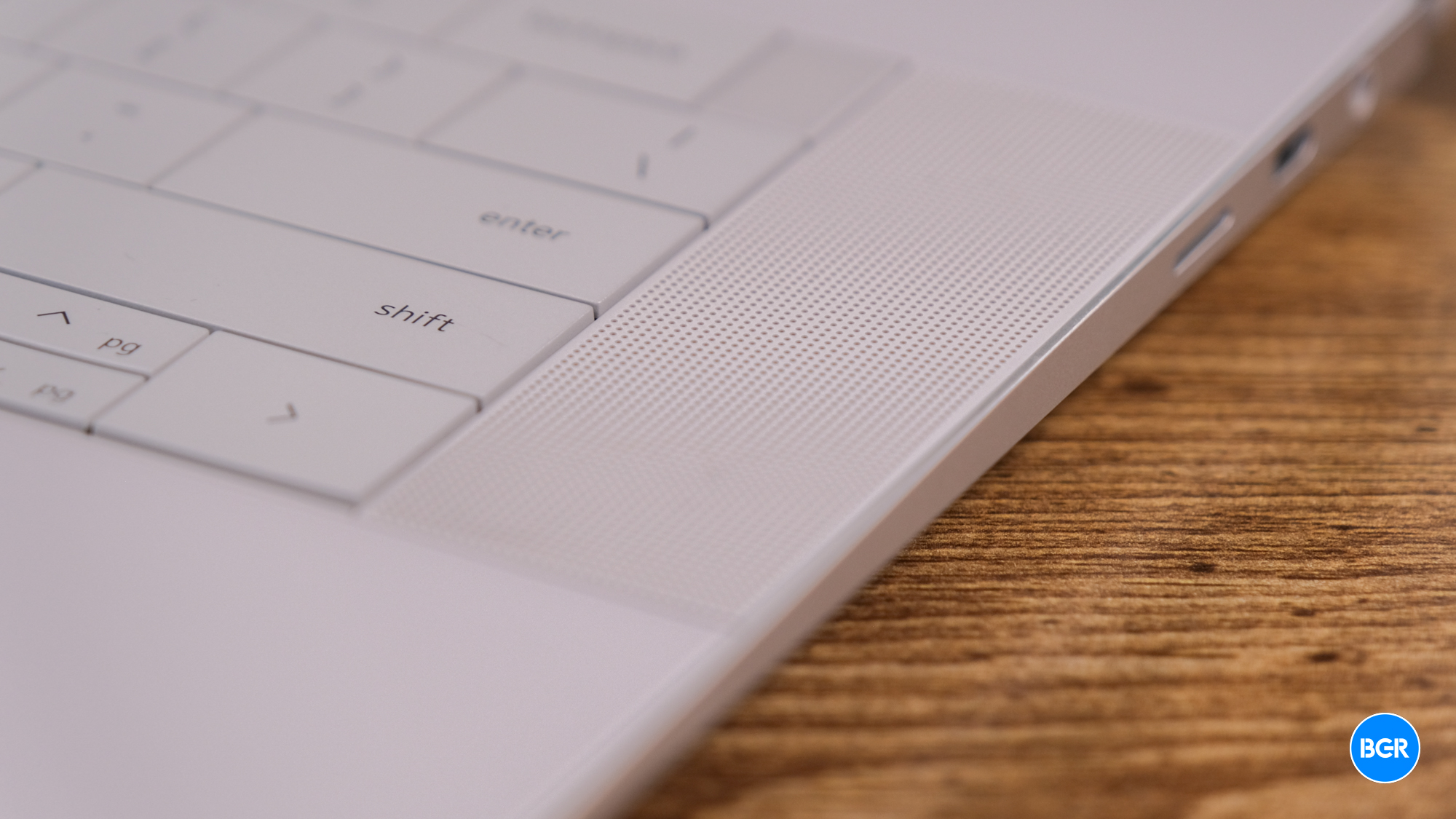
I found that the speakers were able to get quite loud, and they sounded quite good. I will say that the bass response was a little weak compared to the likes of a MacBook Pro, for example, but the MacBook Pro sets a high bar for laptop speaker quality. The mids are decently tuned, though they emphasize the high mids a little. The best thing about the speakers, somewhat surprisingly, was the high-end response — highs were pretty crisp and detailed, helping make the music a little more exciting.
No laptop speakers beat a solid pair of headphones, but in a pinch, the speakers built into the Dell XPS 16 (9640) aren’t bad at all.
Dell XPS 16 (9640) display and webcam
The Dell XPS 16 (9640) comes with two display options — there’s a non-touch 1920 x 1200 16.3-inch display, but you can upgrade to the display that our review model has, which is a 3840 x 2400 OLED touch display.
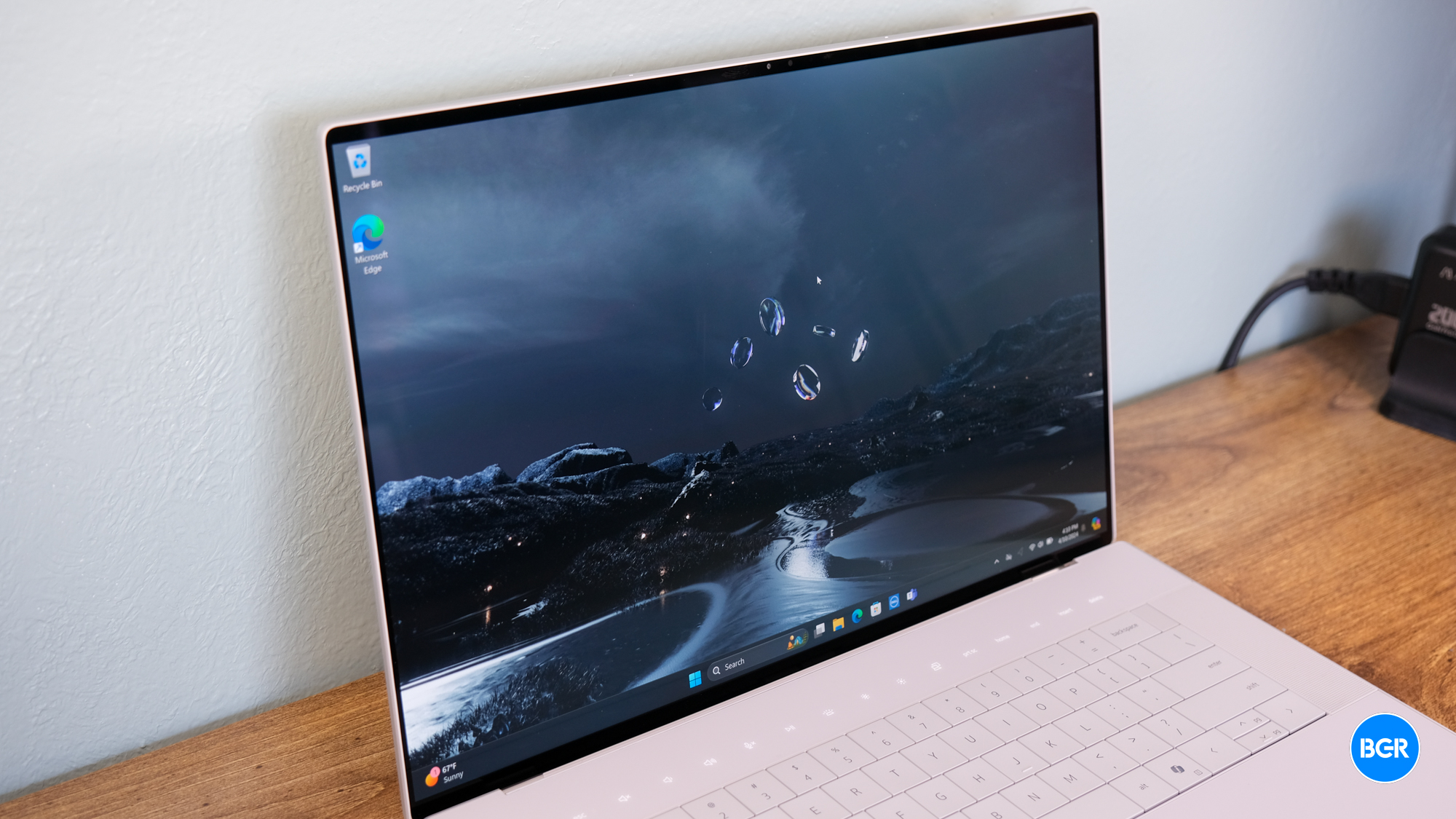
The display looks stunning. It’s crisp and detailed, and I found that it easily got bright enough to use outdoors or in brighter environments. Those who want a high-end display will have no problems with this one — though I will argue that I didn’t really use the touch functionality much.
The webcam offers a 1080p resolution, and it generally offers a crisp video quality. It’s easily better than the cheap webcams you can find on lower-end laptops, and for things like video calls, most will find it to be more than good enough.
Dell XPS 16 (9640) performance
The XPS 16 (9640) comes with options for either an Intel Core Ultra 7 or Core Ultra 9 processor, though the latter option will cost an additional $950. Our review model comes with the cheaper Core Ultra 7 processor, coupled with 32GB of RAM, and an Nvidia GeForce RTX 4070 graphics card. As you would expect, the laptop performed very well.
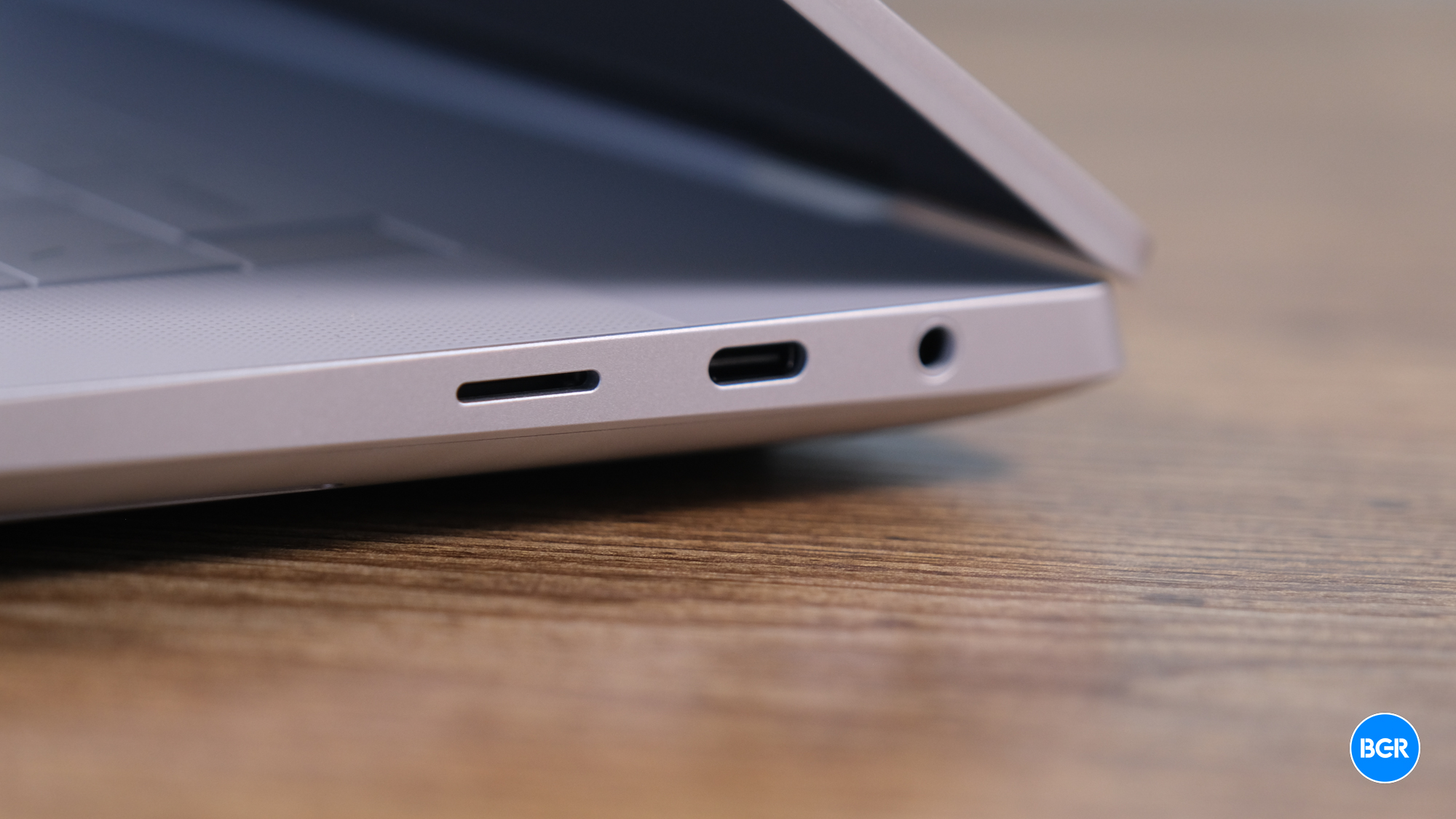
For productivity tasks, this configuration is, of course, overkill. It’ll handle even larger spreadsheets and cruise through web apps with ease.
But those with basic productivity workflows probably won’t buy upgrades like the graphics card that this laptop has. Instead, this configuration is for those who rely on improved graphics performance, like gamers who still want something a little more business-focused, or content creators who plan on editing video. In those workflows, I’ll be the first to admit that I don’t necessarily have hugely demanding video-editing workflows, but I do edit video from time to time and am not immune from playing a game or two. In my workflows, again, the laptop performed very well.
For more in-depth benchmark tests, you can check out this review — but in the meantime, rest assured that the XPS 16 (9640) is up to 99% of tasks, and in a relatively sleek and thin build.
Dell XPS 16 (9640) battery
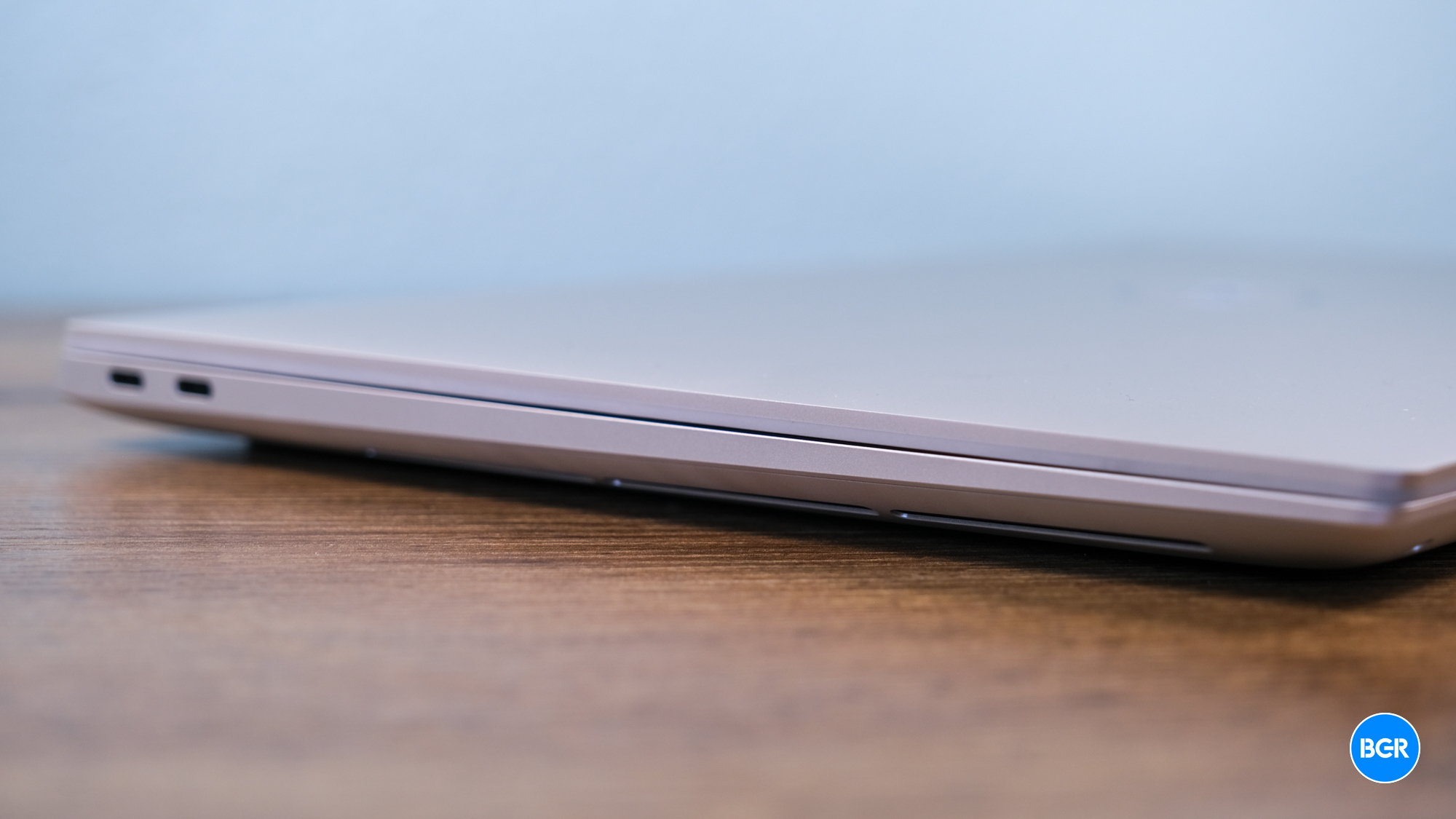
One of the big advantages to the XPS 16 (9640) over other, smaller laptops is the size of the battery. The laptop has a 99.5Whr battery, and Dell claims it’ll deliver up to 28 hours of video playback on laptops with the FHD display. We don’t have that configuration, but the laptop did indeed seem to offer a pretty good battery life overall. The laptop lasted a full workday with over 20% remaining at the end of the day, and while the workload on that day was relatively light, that’s not bad for a laptop without an ARM-based chip.
Conclusions
The Dell XPS 16 (9640) represents a natural progression for the XPS 16. It would be impossible to say that we didn’t see these design changes coming — Dell has been refining this design language for years now. That, of course, doesn’t necessarily mean that everyone will love it — but I do think that even those who aren’t thrilled with the new design will easily get used to it within a few days of using the laptop, and I find it to be very sleek and stylish. That’s not to mention the fact that no matter what configuration you go for, you’re getting a very powerful laptop, with an excellent display, and a solid battery life.
The competition
Perhaps Dell’s biggest competition in the slim, premium, large laptop space is the HP Spectre x360 16. The Spectre x360 16’s configuration is the same as the lowest-performance iteration of the XPS 16 (9640), but it does have a slightly better port selection (with an HDMI and two USB-A ports) and is a little lighter. It also, however, has a smaller battery. If you want a configuration equal to the base XPS 16 configuration, it may be worth considering the Spectre for the better port selection — but even then, the larger battery probably makes the XPS 16 a better choice.
Some also consider the 16-inch MacBook Pro a competitor, but there aren’t all that many people undecided about their preferred desktop operating system — and regardless, the 16-inch MacBook Pro is quite a bit more expensive. It does offer a better battery life, better speakers, and even a better port selection, but again, you’ll have to accept using MacOS and paying at least $600 more.
Should I buy the Dell XPS 16 (9640)?
Yes. It’s an excellent 16-inch Windows laptop.








